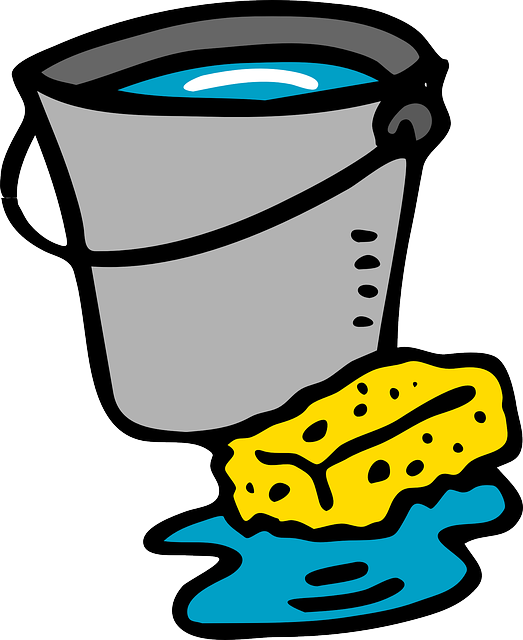Understanding your tile type (ceramic, porcelain, natural stone) is crucial for effective cleaning using suitable methods and pH-balanced solutions. Prepare floors by vacuuming/sweeping, address stains promptly with mild detergents or vinegar, and maintain floors with regular vacuuming, microfiber mopping, and avoiding harsh chemicals. Tailor care to tile type and grout cleaning for long-lasting, pristine results (Best Methods for Cleaning Tile Floors).
Looking for the best methods for cleaning tile floors? This comprehensive guide reveals effective tile cleaning tips tailored to various types and stains. From understanding your floor’s unique care needs to gathering the right tools, pre-cleaning techniques, stain removal strategies, and maintenance hacks, we cover it all. Discover special considerations for specific tile types and overcome difficult stains with ease. Implement these proven best methods for a sparkling, lasting tile finish.
Understanding Your Tile Floors: Different Types and Their Care Needs

Understanding your tile floors is crucial when it comes to effective cleaning. Different types of tiles, from ceramic to porcelain and natural stone, have distinct care needs due to their unique compositions and surface finishes. For instance, porous materials like ceramic may require more frequent sealing and specific cleaning solutions to prevent staining, whereas non-porous tiles like porcelain are generally easier to maintain as they repel liquids.
Knowing the type of tile in your home allows you to employ the best methods for cleaning tile floors. Some tiles might need gentle, regular vacuuming and mopping with warm water and mild detergent, while others may demand more aggressive cleaning techniques to remove tough stains and grime. Understanding these nuances ensures that your tile floors remain in pristine condition, enhancing both their longevity and aesthetic appeal.
Gathering the Right Tools and Cleaning Solutions for Optimal Results

When it comes to tile cleaning, having the right tools and solutions makes all the difference in achieving optimal results. The best methods for cleaning tile floors involve a combination of effective products and proper equipment. Start by gathering a few essential items such as a high-quality vacuum or broom, a mop suitable for tiles (preferably with adjustable settings), and a selection of gentle yet powerful cleaning solutions designed specifically for ceramic or porcelain tiles. Avoid using harsh chemicals that could damage the tile surface or leave stains.
Consider investing in a good quality tile cleaner that is pH-balanced and safe for both stone and grout. Also, don’t forget about protective gear like gloves to safeguard your hands from any potent cleaning solutions. With the right tools and products at hand, you’ll be well-equipped to deep clean and restore your tile floors to their original gloss and sparkle.
Pre-Cleaning: Preparing Your Tiles for a Thorough Cleanse

Before diving into the cleaning process, preparing your tiles is a crucial step in achieving optimal results. Start by vacuuming or sweeping to remove loose dirt and debris from the surface. This initial step prevents scratches on your tile and ensures the cleaner reaches every nook and cranny. For extra stubborn stains, apply a mild detergent or vinegar solution using a soft-bristled brush; let it sit for a few minutes, then scrub gently.
This preparation is essential when employing best methods for cleaning tile floors. By taking this pre-cleaning step, you’re not just saving time but also enhancing the effectiveness of your chosen cleaning agent. Moreover, it helps to extend the lifespan of your tiles by preventing damage and preserving their original appearance.
Effective Cleaning Techniques for Stain Removal

When it comes to effective cleaning techniques for stain removal on tile floors, there are several best methods to consider. First and foremost, addressing stains promptly is key. The longer a spill or dirt has to set in, the more challenging it becomes to remove completely. Start by using a microfiber mop or sponge to blot out any excess liquid as soon as possible. This initial step prevents the stain from penetrating deeper into the tile and grout lines.
For stubborn stains, combining a mild detergent with warm water is an effective approach. Apply the solution onto the stained area using a clean cloth or brush, gently scrubbing in circular motions. For particularly tough cases, slightly diluted white vinegar can serve as a natural cleaner. Always test any cleaning solution on a small, inconspicuous area first to ensure it won’t damage or discolor your tiles. Rinse thoroughly with warm water afterward to remove all residue.
Maintaining Your Cleaned Tiles: Tips for Longevity and Shine

After successfully cleaning your tile floors, it’s essential to maintain their pristine condition with consistent care. The best methods for cleaning tile floors involve regular vacuuming or sweeping to remove loose dirt and debris. This prevents particles from settling into the grout lines, making future deep cleanings more manageable.
Additionally, using a microfiber mop with a mild detergent suitable for tiles will help keep your floors sparkling. Avoid harsh chemicals which can strip away the protective finish on your tiles and grout. Remember to rinse thoroughly after mopping and dry the floor surface to prevent water damage. By combining these simple best methods for cleaning tile floors, you’ll achieve longevity and maintain that initial shine for years to come.
Special Considerations: Cleaning Specific Tile Types and Difficult Stains

When it comes to cleaning tile floors, different types of tiles and stains require unique approaches using the best methods for cleaning tile floors. Ceramic and porcelain tiles, for instance, should be cleaned with mild detergents as aggressive chemicals can damage their finish. Natural stone tiles like marble or granite demand extra care due to their porosity; regular sealing is essential to prevent staining.
For difficult stains, such as those from grease, wine, or ink, specialized cleaning solutions and techniques are needed. Enzymatic cleaners can break down organic compounds effectively. For grout, a separate cleaning process is necessary as it tends to accumulate dirt and moisture, leading to mold growth. Using a grout brush and baking soda paste can help restore its cleanliness.
